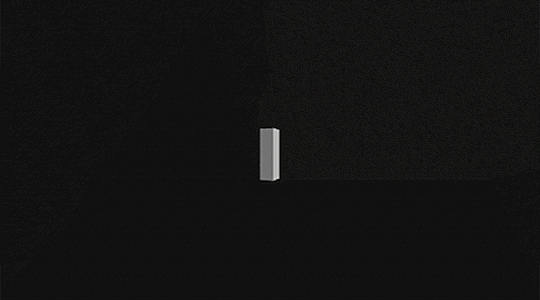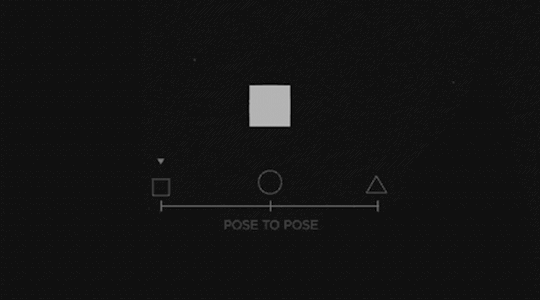A blog featuring Motion Graphics, Video Editing and Graphic Design,Learn after effetcs - tips and trics. with over 4 years of expertise in crafting visually stunning graphics. your go-to destination for Best Motion Graphics and Animation VFX tutorials! 🎨💥.
Don't wanna be here? Send us removal request.
Text
Mastering Trim Paths in After Effects: A Guide to Dynamic Shape Animations
Learn to create dynamic animations with After Effects' Trim Paths feature, perfect for smooth shape reveals and versatile motion graphics.










Animating Trim Paths in After Effects is a powerful technique used to create dynamic and visually appealing animations, especially with vector-based shapes and paths. Trim Paths essentially allows you to animate the start and end points of a shape's path, giving you control over how it reveals or hides over time.
Here's why it's amazing to use:
Controlled Reveals and Hides: Trim Paths enables you to animate the drawing of shapes, making it perfect for creating effects like drawing outlines, revealing text or logos, or creating intricate animations where shapes appear or disappear dynamically.
Versatility: You can use Trim Paths with a wide range of shapes, including basic shapes like circles and rectangles, as well as custom vector shapes created with tools like the Pen Tool. This versatility allows for endless creative possibilities.
Smooth Animations: It provides smooth and precise control over the animation of paths, allowing you to create fluid and seamless transitions between different shapes or states.
Layered Animations: You can apply Trim Paths to individual shape layers or masks within a layer, allowing for complex animations with multiple layers interacting and revealing each other.
Combining Effects: Trim Paths can be combined with other After Effects effects and techniques, such as keyframe animation, expressions, masks, and effects like Stroke and Gradient Ramp, to create even more intricate and unique animations.
With Trim Paths, you can:
Animate Stroke End: This controls the endpoint of the path, allowing you to animate the drawing of a shape from beginning to end or vice versa.
Animate Stroke Start: Similar to End, this controls the starting point of the path, useful for animating shapes to disappear or shrink.
Offset Path Animation: You can animate the offset of the path, creating effects where shapes follow a path or move along a trajectory over time.
Complex Shape Reveals: By combining multiple Trim Paths animations, you can create complex reveals or animations where shapes morph or transform gradually.
Overall, Trim Paths in After Effects is a fundamental tool for animators and motion graphics artists, offering precise control and endless creative possibilities for animating shapes and paths.
Follow me for more exiting tips and animation insights @motionpandey
Thanks for reading ♥
#motion graphics#2d animation#after effects#learn animation#motion design#art#animation tips#artists on tumblr#tumblog#trim path
8 notes
·
View notes
Text

Unlocking the Power of Animation: A Guide to the 12 Principles of Animation
The 12 Principles of Animation: Bringing Life to Art
Animation is a captivating and ever-evolving art form that has the power to transport audiences to fantastical worlds and stir deep emotions.
Behind the magic of animated films and videos lie the "12 Principles of Animation" a set of guidelines that have been the cornerstone of animation since their introduction by Disney animators Frank Thomas and Ollie Johnston in their 1981 book, "The Illusion of Life" These principles are the building blocks of animation, allowing artists to breathe life into characters and create fluid, engaging motion.
Here are the 12 principles, along with explanations for each:
1. Squash and Stretch (Flexibility and Elasticity)

This principle emphasizes the need to give volume and weight to objects and characters by distorting them when they move. It adds a sense of realism and exaggeration to the animation.
2. Anticipation (Preparing for Action)

Before a character makes a significant movement or action, there should be a brief moment where they prepare for it. This helps the audience understand what's about to happen and adds depth to the animation.
3. Staging (Presentation and Clarity)

Staging involves arranging elements in the scene to convey the story clearly. Proper framing, camera angles, and composition guide the viewer's focus to the most important elements.
4. Straight Ahead and Pose to Pose (Two Approaches to Animation)

These are two different methods of animating. Straight ahead involves creating each frame in sequence, while pose to pose focuses on defining key poses and then filling in the gaps. Both methods have their uses, depending on the desired effect.
5. Follow Through and Overlapping Action (Secondary Motion)

Objects and characters should continue moving slightly after their primary action has stopped (follow through) and some parts of the character may move at different rates or in different directions (overlapping action). This adds realism to motion.
6. slow in and out (Easing In and Out)

To make movements look more natural, objects should start and end their actions gradually, with acceleration and deceleration. This principle prevents abrupt and robotic motion.
7. Arcs (Natural Paths of Action)

Most natural movements follow an arcing path rather than straight lines. Animators should ensure that characters and objects move in arcs to mimic real-world physics.
8. Secondary Action (Supporting Actions)

Secondary actions complement the primary action and add depth to the character or scene. These actions can be facial expressions, gestures, or any other movement that enhances the animation.
9. Timing (Pacing and Rhythm)

Timing is crucial to establish the mood and rhythm of the animation. It determines how fast or slow actions occur and can evoke different emotions in the audience.
10. Exaggeration (Accentuating Reality)

Exaggeration is used to amplify the actions and emotions of characters, making them more expressive and engaging. However, it should be used judiciously to maintain believability.
11. Solid Drawing (Three-Dimensional Forms)

Animators must understand the principles of traditional drawing, including anatomy, perspective, and form, to create characters and objects that appear three-dimensional and solid in a 2D space.
12. Appeal (Attractiveness and Personality)

Appeal refers to the likability and charisma of characters. It involves designing characters with unique and interesting traits that draw the audience's attention and empathy.
Mastering Animation: 12 Essential Principles Explained These principles serve as a foundation for animators to craft compelling stories and characters.
While they were developed in the realm of traditional hand-drawn animation, they continue to be relevant in today's digital animation techniques.
Aspiring animators and seasoned professionals alike still rely on these principles to captivate audiences and breathe life into their creations, reminding us that the magic of animation lies in its ability to make the impossible seem real.
As i conclude this journey through the intricate world of animation, extend our heartfelt gratitude to each reader.
Thank You for Reading ♥
Follow Motion Pandey for more such as amazing animation tips and tricks content
#animation#motion graphics#12 Principles of Animation#motion design#after effects#asthetic#2d animation#principles#artists on tumblr#tumblog#learn animation
24 notes
·
View notes
Text
🎉 Launching April 1st 2024 ! 🎉
Get ready to upgrade yourself with design to animation ?
Start learning with Motion Pandey - animation, Motion Graphics.
Tutorials, tips & tricks and creative inspiration.
💡 Here's what you can expect:
In-depth tutorials covering everything from basic animation principles to advanced After Effects techniques.
Creative challenges and exercises to ignite your imagination and hone your skills.
Insider insights and behind-the-scenes peeks into the world of professional animation and motion graphics.
Engaging discussions on industry trends, software updates, and the future of animation.
YouTube :- https://youtube.com/@Motionpandey
#after effects#motion graphics#2d animation#video editing#design#learn animation#motion pandey#tutorial
2 notes
·
View notes
Text

Hi recently some of my friend share me that horror looking picture clicked in Germany and i saw that image after that my creative mind wants to make funn and make more interesting to look and i did that you can see in the video which I created with the raw
Hope you friends love ❤️ this
0 notes
Text
Hi i made this 🎨 💡 color motion transition. Hope you love ❤️ it
1 note
·
View note
Text
Life is this ❤️ i like this 😍
Quick shot of my projects which i have done in my motion video work journey
Hope you like it
1 note
·
View note
Text
Love comes alive through mesmerizing motion graphics! 💖🎬 Embrace the enchantment in my first-ever reel video, where creativity dances with affection. #LoveInMotion #motiongraphics #MotionGraphicsMagic
Check out hope you like it
2 notes
·
View notes